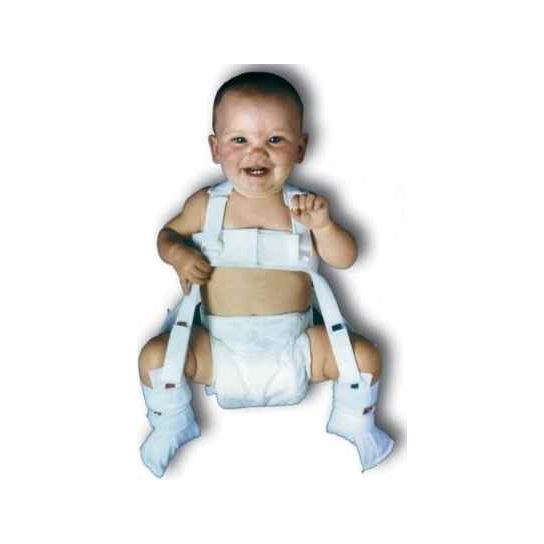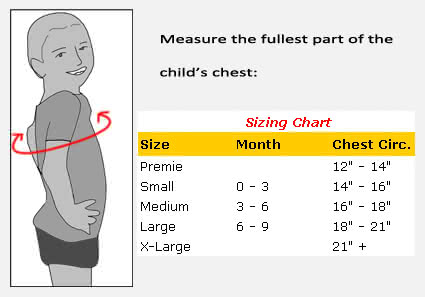Short Description
Wheaton Pavlik Harness is designed to treat hip dysplasia. Holds infant's hips to prescribed orthopedic standards. Promotes normal hip development.
The Wheaton Pavlik Harness is meticulously constructed to conform to prescribed orthopedic standards. It is used to treat hip dysplasia by holding the infant hips in a position of controlled flexion and abduction. Unlike a cast, the harness does not rigidly immobilize the hips, but allows movement in a controlled manner. This allows the head of the femur to deeply mold the acetabulum, while holding the hips in a stabilized position.
The patient’s comfort is assured with the soft inner lining of the halter. Hook-and-loop fasteners allow for rapid and secure adjustment. The Pavlik harness does not have bulky buckles, so the child is comfortable in any position, and all adjustments to the shoulder straps and front and back straps can be made while the child is laying on his or her back.
The Wheaton Pavlik Harness has color-coded straps that help parents avoid misapplication. A specially-designed anti-slip foot piece prevents the foot from slipping out of the harness.
Wheaton Pavlik Harness Features:
- Harness is designed to maintain the hip joint in an aligned position for proper hip development.
- Soft inner lining of the halter is skin-friendly for maximum comfort.
- Designed to help reduce the risk of hip dislocation.
- Hook-and-loop fasteners for rapid, secure adjustment.
- No bulky buckles.
- Color-coded straps to hold help parents to avoid misapplication.
- Adjustments can be made without removing the harness - simply position the child on his or her back.
- Anti-slip foot piece and leg straps secure feet in the harness properly.
- Designed to orthopedic standards for safety, effectiveness, and comfort.
- Made in the USA for highest manufacturing quality.
Recommended Manufacturer HCPC: L1620.
The Wheaton Pavlik Harness can be used for:
- Infant Hip Dysplasia.
- Congenital Dislocatable Hip or Hip Dislocation.
- Congenital Subluxatable Hip.
- Acetabular Dysplasia.




